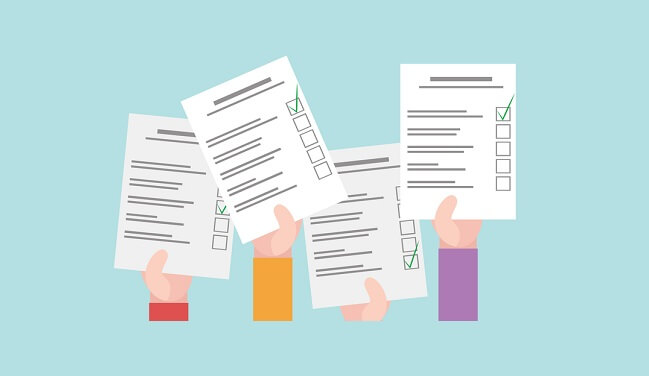When our clients ask for help with their projects to assess customer satisfaction or experience, there is one important aspect that needs to be decided from the word “Go” because it will dictate certain features of the study: the decision on how and which is the best system for conducting interviews or customer satisfaction surveys. Telephone? Face to face? Electronic?
This decision is typically made based on different reasons that we wish to summarize in this blog post.
Satisfaction survey: types of customer surveys and interviews
The tools available for obtaining feedback or interviewing customers generally end up being one of the three types shown in the table below. Each type of satisfaction survey has its pros and cons that we will need to evaluate based on the characteristics, aims and budget of the study.
| Type of survey | Pros | Cons | Most common applications |
|---|---|---|---|
| Face to face | · The survey can be done on the spot, at the same time as the product or service is consumed | · High cost | · Key customer surveys |
| · The required sample can be selected dynamically and in situ | · If customers are geographically disperse, it is more expensive | · Surveys with more qualitative information | |
| · Objects or information can be shown directly to the customer | · Takes longer to complete | · Long, complex surveys | |
| · Good answers to open questions | · Surveys where the customers are together in a single place and time | ||
| · The customer can be asked to complete certain aspects | · On-the-spot surveys at the point of service | ||
| | |||
| By telephone | · We can have a lot of control over the interview content and exact process | · Average cost | · All types of general survey |
| · The selection of the right sample can be very good | · It can be boring if lots of similar questions need to be answered (e.g. with scoring scales) | ||
| · Some customers may be difficult to find | |||
| · Visual information cannot be displayed | |||
| | |||
| Electronic/Web | · Low cost | · Low indexes of response | · B2B surveys with a strong or fixed relationship with the customer |
| · A large number of or all the customers can be surveyed | · There is nobody to clarify questions | · Surveys to users of websites, cell phones or apps | |
| · Customers can respond when it suits them | · The answers to open questions tend to be poor | · Surveys integrated with business software (CRM, sales outlet, reception, etc.) | |
| · Video and images can be inserted | · Subsequent statistical processing may be needed for the selection of the correct sample | · Internal satisfaction surveys to company staff | |
| · Easy to answer and usually quick for customers | · Automated, regular, very short or unassisted surveys (e.g. newsstands) | ||
| · Studies are quick to conduct | |||
To find out more about satisfaction surveys, we recommend reading other articles from our blog here.




